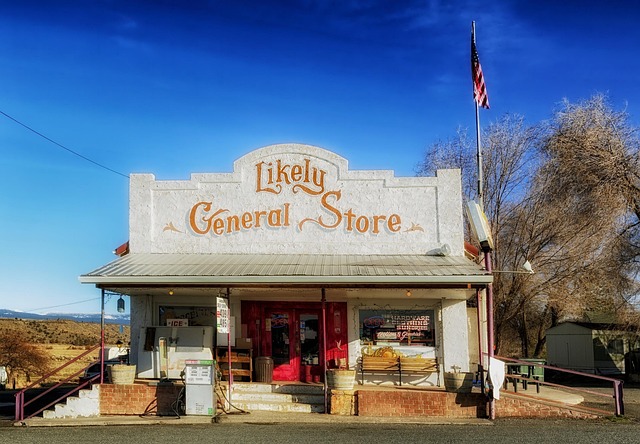General Liability (GL) insurance is essential for local businesses, offering protection against financial losses from bodily injury or property damage claims. It's particularly vital for small businesses, providing peace of mind and enabling growth by mitigating potential threats. Every business faces risks, and CGL insurance covers accidents, property damage, and personal injuries, including legal defense costs. Understanding policy exclusions and tailoring coverage to unique risk factors is crucial. Real-world examples highlight GL's importance in protecting firms from substantial losses.
Local businesses face unique risks, making General Liability (GL) insurance a cornerstone of their risk management strategy. This comprehensive guide delves into the essentials of GL insurance, explaining its foundational role in protecting local enterprises from common liability hazards. From understanding key coverage areas to navigating claims and policy nuances, we equip business owners with knowledge to make informed decisions. By exploring real-world case studies, this article offers valuable insights into the tangible impact of robust GL coverage.
Understanding General Liability Insurance: A Foundation for Local Businesses

General Liability insurance is a cornerstone of risk management for local businesses. It provides protection against claims of bodily injury or property damage that may arise from operations within the business premises, products sold, or services provided. Essentially, it acts as a financial safeguard, covering legal expenses and damages awarded in such cases.
For small businesses, this insurance is indispensable. It offers peace of mind by mitigating potential financial losses that could cripple their operations. By understanding and prioritizing General Liability coverage, local entrepreneurs can focus on growing their ventures with the assurance that they are protected against unforeseen liabilities.
Who Needs Commercial General Liability? Defining Your Business Exposure

Every business, regardless of its size or industry, faces potential risks and liabilities. Commercial general liability (CGL) insurance is designed to protect businesses against financial loss due to claims of bodily injury, property damage, or personal and advertising injuries. Understanding your business exposure is crucial in determining if CGL is necessary for your enterprise.
Identifying potential hazards specific to your operations is essential. For instance, a construction company may face liability from workplace accidents or property damage during projects, while a restaurant could be held accountable for foodborne illnesses or slip-and-fall incidents on its premises. By assessing these risks, business owners can make informed decisions about their insurance needs and ensure they have adequate protection in place should unexpected events occur.
Key Coverage Areas: Protecting Against Common Liability Risks

General Liability insurance is a crucial component for any local commercial enterprise, offering protection against a wide range of potential risks and liabilities that may arise in the course of business operations. This coverage is designed to safeguard businesses from financial loss due to claims of bodily injury, property damage, or personal and advertising injuries.
Key coverage areas under General Liability include: product liability, which protects against claims related to defective products; professional liability, covering mistakes or negligence in professional services; and premises liability, addressing injuries sustained on business property. Additionally, this type of insurance provides legal defense costs, up to the policy limits, when a claim is made, ensuring businesses can navigate potential liabilities effectively without incurring substantial legal expenses.
Types of Claims and Exclusions: Navigating Potential Liabilities

General Liability insurance is designed to protect businesses from a wide range of claims, but it’s crucial to understand the types of liabilities covered and those that are excluded. Common claims include accidents involving customers on business premises, property damage caused by operations, or personal and advertising injuries resulting from faulty products or services. These coverages are essential components of any robust General Liability policy.
However, certain situations are often excluded from standard policies. Exclusions may apply to intentional acts, such as assault or defamation, as well as damages arising from war, nuclear hazards, or pollution. Navigating these potential liabilities requires careful consideration and tailored coverage adjustments to ensure comprehensive protection for your business against the unpredictable nature of legal claims.
The Role of Policy Limits and Deductibles in Risk Management

General Liability policies are a crucial component of risk management for local businesses, providing financial protection against potential claims and lawsuits. Within these policies, two key elements play a significant role in shaping the level of risk exposure: policy limits and deductibles. Policy limits refer to the maximum amount of coverage available under the policy, representing the insurer’s commitment to compensate the insured for eligible losses. On the other hand, deductibles are the amount the insured must pay out-of-pocket before the insurance coverage kicks in.
Understanding these components is essential as they directly impact how businesses navigate financial risks. Higher policy limits offer broader protection against substantial claims, while deductibles act as a buffer between the business and potential losses. Businesses should carefully consider their operations, risk exposure, and financial capabilities when setting these parameters to ensure an adequate level of General Liability coverage tailored to their specific needs.
Obtaining and Reviewing Policies: Tips for Effective Coverage

When exploring or reviewing Commercial General Liability (CGL) policies, it’s crucial to approach the process with a strategic mindset. Begin by thoroughly understanding your business’s unique exposure and risks. This involves assessing operations, products, and services to identify potential hazards. Engaging an insurance professional can provide valuable insights tailored to your specific needs.
Next, compare policy language and coverages from different providers. Look for comprehensive protection against claims-making processes and associated costs. Key considerations include limits of liability, exclusions, and conditions. Ensure the policy aligns with legal requirements and offers adequate protection against common business risks. Regular reviews are essential, as businesses evolve, so too do their insurance needs.
Case Studies: Real-World Examples of General Liability Impact

General Liability plays a pivotal role in shaping business operations and risk management strategies, as evidenced by numerous real-world case studies. For instance, consider a local café that experiences a slip-and-fall incident on its premises. A customer trips on a damp floor and sustains an injury, leading to a liability claim. This scenario highlights the potential for General Liability coverage to shield the business from significant financial burdens, including medical expenses and legal fees. Without adequate protection, such incidents could cripple small businesses, especially those with limited resources.
Another case in point involves a construction company involved in a project where its subcontractors leave behind hazardous debris. A nearby resident sues the construction firm for property damage caused by the unsafe conditions. In this situation, General Liability insurance provides a safety net, covering legal costs and helping the business resolve the dispute promptly. These examples underscore how General Liability isn’t just a legal requirement but a strategic tool for businesses to navigate risks effectively and sustain their operations in an unpredictable market.
